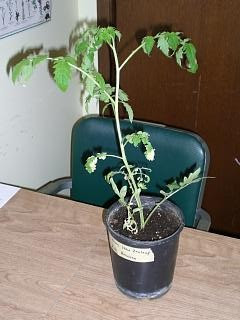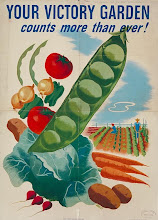
Meet Babou, the French Voyageur who traveled in this area during the fur trade era of the early 19th century. Babou paid a visit to the state park last weekend and brought a sizeable collection of trade goods from that era with him. Visitor turn-out was low, probably because this was the first nice Saturday we'd had this spring, and people were busy catching up with spring to-dos in their own yards.
I've been to many naturalist programs at parks, and I am always overwhelmed by the amount of cool stuff I want to learn. Over time I've learned that I won't remember all of it; in fact, I'll hardly remember any of it afterward, unless I focus on just one or two really cool nuggets of information. If all works well, these nuggets will get wedged into my head and become permanent memories.
One of the nuggets I'm taking away with me from last weekend is about tea. I don't drink coffee, but I do like tea. Not fruity tea, not flowery tea, not herbal tea, but just plain jane English Breakfast tea. The kind I used to drink with breakfast in the mornings at my guest house while studying abroad in Edinburgh. The kind that goes so well with butter-baked shortbread during a rare quiet moment sitting at the kitchen table in the late afternoon. Yum.
On Saturday I saw my first tea brick. Tea bricks are literally bricks made out of steamed and pressed tea leaves. If you want to make tea from them, you just take a knife and scrape some of it off into your cup. Tea bricks became so widely used and accepted that they served as currency during the 19th and 20th century in Tibet, Mongolia, Siberia, and Northern China. They have fancy designs on them and are scored on the back for easy breaking to make change. People would even put these bricks in frames and hang them on their walls as a symbol of their wealth.

I picked up the tea brick and smelled it, thinking I was going to smell the lovely aroma of tea. Wrong. What I smelled was much less pleasant. This made sense after I read on Wikipedia that "Some tea bricks were also mixed with binding agents
such as flour, blood, or manure in order to even better preserve their form such that they could withstand physical use as currency." Not so yum.
So these people loved tea so much that it began to represent something more than just tea, something people used for money, something they coveted and kept and showed off to their neighbors. In the process, they managed to change the very nature of the thing they started with. I'm sure many folks didn't notice that their hot cup of tea was now a hot cup of tea and manure, but I'm sure there were some.
We live three miles from Big Stone Lake. I'm told that forty years ago there were many large stretches of open shoreline. Cabins were few and far between. Deer and fox could wander from the grasslands down to the lakeside without trouble, and otter and beaver built homes along the shore. Nowadays I'd hazard a guess that over 70% of the shoreline has houses or cabins or mown grass. Fox are scarce, beaver even scarcer and otter almost non-existent.
I'm not saying that I want Big Stone County to stay the same. I want people to repopulate rural areas, to realize how great it is to live away from the city, how great it is to reconnect with the landscape. I just want to be sure that in the process of revitalization, we all don't end up drinking hot cups of manure tea.
 Instead I'll write about the Three Sisters Garden I have growing at work. I have the benefit and the curse of having two gardens: one at home and one at work. The Three Sisters Garden is modeled after the gardens tended by the Hidatsa people of North and South Dakota. Three sisters refers to the three main vegetables grown - corn, beans and squash. Sunflowers are also grown, but I guess those aren't counted in the name.
Instead I'll write about the Three Sisters Garden I have growing at work. I have the benefit and the curse of having two gardens: one at home and one at work. The Three Sisters Garden is modeled after the gardens tended by the Hidatsa people of North and South Dakota. Three sisters refers to the three main vegetables grown - corn, beans and squash. Sunflowers are also grown, but I guess those aren't counted in the name. chemical and it's been pretty successful. Once you get the mounds established, weeding is minimal. We spread straw between the mounds to control weeds and retain moisture. We do have a problem with ground squirrels that like to pull out the corn seedlings to eat the kernal underneath, and also like to take away our bean pods. We're working on the ground squirrels.
chemical and it's been pretty successful. Once you get the mounds established, weeding is minimal. We spread straw between the mounds to control weeds and retain moisture. We do have a problem with ground squirrels that like to pull out the corn seedlings to eat the kernal underneath, and also like to take away our bean pods. We're working on the ground squirrels.











